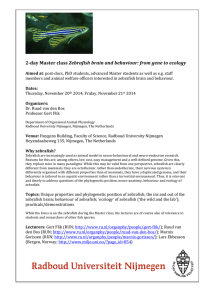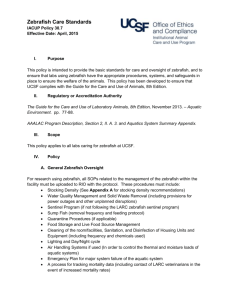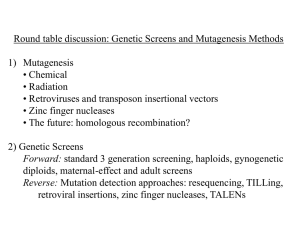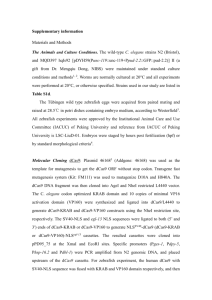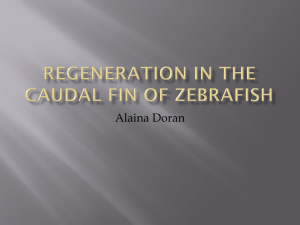Submitted by: GENERATION CURES TITLE: CHARACTER
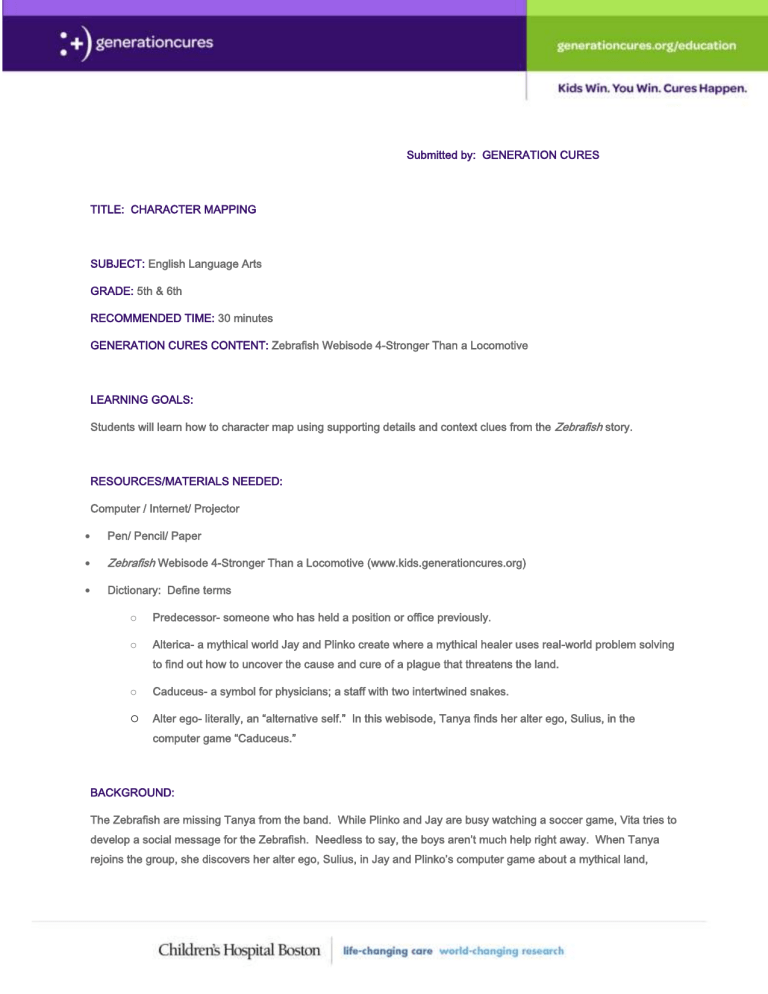
TITLE: CHARACTER MAPPING
SUBJECT: English Language Arts
GRADE: 5th & 6th
RECOMMENDED TIME: 30 minutes
Submitted by: GENERATION CURES
GENERATION CURES CONTENT: Zebrafish Webisode 4-Stronger Than a Locomotive
LEARNING GOALS:
Students will learn how to character map using supporting details and context clues from the
Zebrafish
story.
RESOURCES/MATERIALS NEEDED:
Computer / Internet/ Projector
Pen/ Pencil/ Paper
Zebrafish
Webisode 4-Stronger Than a Locomotive (www.kids.generationcures.org)
Dictionary: Define terms o Predecessor- someone who has held a position or office previously. o Alterica- a mythical world Jay and Plinko create where a mythical healer uses real-world problem solving to find out how to uncover the cause and cure of a plague that threatens the land. o Caduceus- a symbol for physicians; a staff with two intertwined snakes. o Alter ego- literally, an “alternative self.” In this webisode, Tanya finds her alter ego, Sulius, in the computer game “Caduceus.”
BACKGROUND:
The Zebrafish are missing Tanya from the band. While Plinko and Jay are busy watching a soccer game, Vita tries to develop a social message for the Zebrafish. Needless to say, the boys aren’t much help right away. When Tanya rejoins the group, she discovers her alter ego, Sulius, in Jay and Plinko’s computer game about a mythical land,
Alterica, and a healer staffed with a Caduceus. Jay and Plinko have, in fact, created characters for all of their friends, keeping their friends personalities intact.
LESSON STEPS:
Watch with a Purpose: Ask students to write the names of the characters involved in Webisode 4-“Stronger than a
Locomotive.” Students should be asked to write down what happens in this webisode, and teachers should review aloud with the class the plot and characters within the story.
After watching
Webisode 4-Stronger than a Locomotive
, ask students to review online the characters in
Zebrafish
.
Draw a character map on the board, and ask students what they noticed in the webisode about each character, filling in the map with the student’s observations.
Characters in literary or imaginative texts often are defined by the conflicts they enter, the setting in which they exist, and the emotions they express through their tone and mood (which are often provided by the narrator). Characters are important to advance plots in texts, so having multiple, layered characters contributes to the development of a sophisticated plot.
Thinking like a writer: Ask that students begin writing a journal of characters they read about in class, including
Zebrafish characters, mapping traits for each character as they do so. As they keep this journal, ask the students to also write character traits of classmates, teachers, family members, and even fictional characters they see on TV or in video games.
EXTENSIONS:
Repeatedly ask students what characters they have discovered and written about in their writing journal. When your lesson plan reaches the goal of individual creative writing, ask students to create multiple layers of characters using traits from characters in their journal.
Example:
Tanya
School-oriented
Vita
Passionate
Walt
Creative
Jay
Likes Tanya
Selfish at first
While conducting the character map exercise, ask students to provide supporting evidence and context clues from the text for their character maps.




